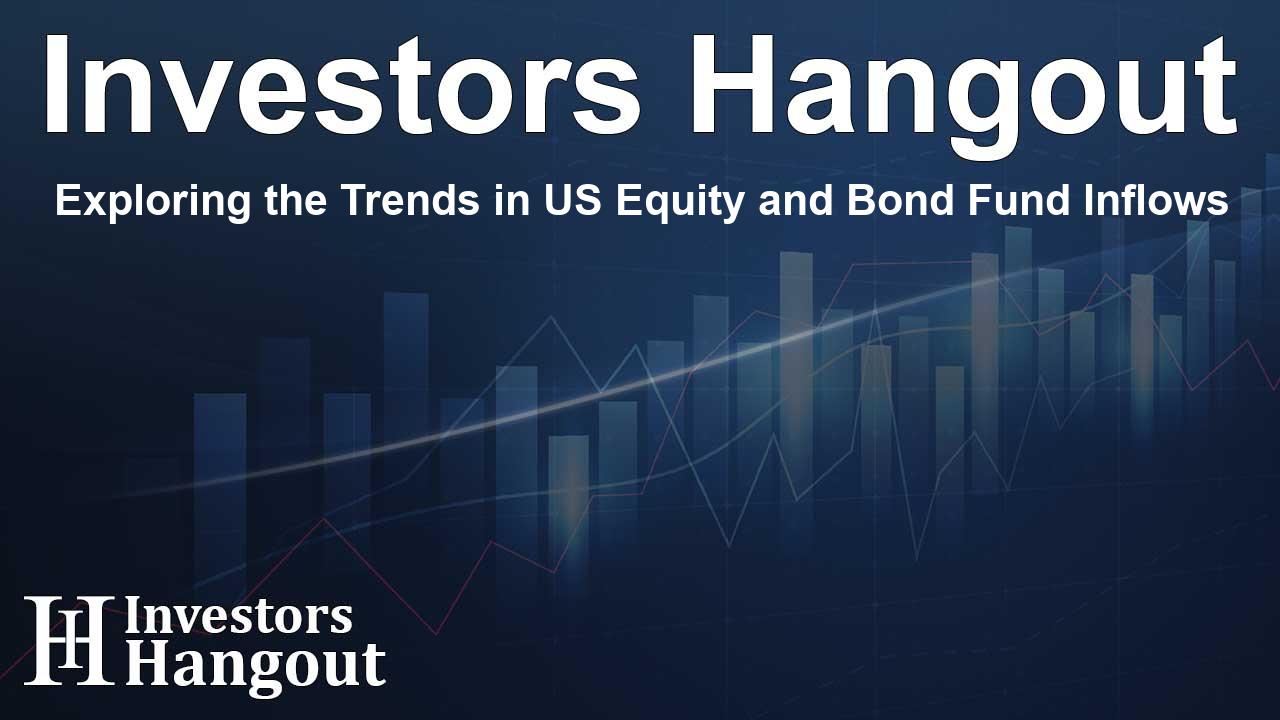Exploring the Trends in US Equity and Bond Fund Inflows

Understanding Fund Flows in 2025
As the capital markets experience fluctuations, the response from global fund flows has been nothing short of intriguing. Over the first part of the year, money market funds have emerged as the most popular asset class, attracting a whopping $238.21 billion. Interestingly, $267.44 billion has been channeled into USD funds, primarily within US-domiciled offerings, paired with $54.48 billion directed towards their euro equivalents.
Despite ongoing market anxieties, the equity segment still shows promise, gathering $143.7 billion in inflows, while bonds have also attracted $120.02 billion. Particularly, US equities are leading the charge with an impressive $192.9 billion, outpacing the broader equity market. Although the S&P 500 has yet to recover its all-time highs from February, it has shown resilience after the dip seen in early April, demonstrating a healthy recovery.
Interestingly, the small and mid-cap equity markets in the US have faced challenges. With redemptions totaling $62.45 billion, the month of April proved particularly difficult, marking a significant loss of $20.07 billion. This trend isn’t surprising given that smaller-cap stocks are often considered higher risk, particularly amidst tariff uncertainties that could impact their performance negatively.
Analyzing Global Equity Classifications
The global equity funds are often viewed as a diversified bet, historically regarded as a default choice prior to the prevailing narrative of US exceptionalism. Flows into this category have remained fairly stable throughout the year, generally fluctuating between £11 billion and $18 billion, with a notable decrease in March. In recent months, however, funds excluding the US have seen an upward trend, suggesting that investors may be reassessing their US exposures.
Domestic versus International Fund Flows
When analyzing funds by domicile, a nuanced picture emerges. The data indicates a higher volatility in month-to-month allocations for US-domiciled equity funds. April could be seen as a recovery month following a slow March, albeit with a caution that the figures for May remain provisional as of early in the month. A noteworthy spike in inflows to global equity funds excluding the US marked May, with an unusual $8.32 billion, indicating some investors are strategically diluting their domestic positions.
It's crucial to note that this dilution isn’t happening via purchases of global equity funds — these have experienced monthly outflows, summing up to -$13.87 billion by May’s end. Conversely, non-US domiciled fund investors have energetically allocated $89.25 billion to global equity classifications throughout the year, while they continue to show slower growth with US equity investments.
International Perspectives on Equity
For investors outside the US, the preference for global equity remains highlighted, with such funds maintaining substantial US equity exposure. Recent months have observed equity funds excluding the US growing in favor, a significant indicator of shifting investor sentiment. Particularly, European equity funds have made a commendable transition from net outflows to inflows, collecting a solid $23.99 billion from February through May, capitalizing on their outperformance during the earlier months of 2025.
On the other hand, non-US investors have been retreating from Bond USD Government funds each month, driven by perceived risks and a weakening dollar. The retreat, amounting to $6.58 billion in redemptions so far, while modest relative to the vast $30 trillion US Treasury market, reflects a cautious shift among international investors.
The Road Ahead for Investors
The current landscape suggests that investors aren't hastily abandoning US assets, aside from the challenges faced by small and mid-cap stocks. However, as investors contemplate potential alternatives, especially if the leaders of the market begin to falter, the demand dynamics are likely to evolve significantly.
Frequently Asked Questions
What are the main trends in fund flows for 2025?
The main trends reveal strong inflows into money market funds, while US equities and bonds also attract significant interest, despite some concerns in smaller-cap stocks.
How have US equity funds performed recently?
US equity funds have shown resilience, with significant inflows especially noted in April, although small and mid-cap sectors have struggled with major redemptions.
What shifts are occurring with global equity investments?
Investors are increasingly looking towards equity funds excluding the US, indicating a strategic reassessment of risk and opportunity among global markets.
Are international investors moving away from US bonds?
Yes, international investors have shown tendencies to withdraw from US Bond USD Government funds, reflecting concerns around perceived risks and currency fluctuations.
What does this mean for the future of US asset investments?
The evolving dynamics suggest a cautious approach among investors, potentially seeking alternatives if leading equities begin to lose their effectiveness in the market.
About The Author
Contact Logan Wright privately here. Or send an email with ATTN: Logan Wright as the subject to contact@investorshangout.com.
About Investors Hangout
Investors Hangout is a leading online stock forum for financial discussion and learning, offering a wide range of free tools and resources. It draws in traders of all levels, who exchange market knowledge, investigate trading tactics, and keep an eye on industry developments in real time. Featuring financial articles, stock message boards, quotes, charts, company profiles, and live news updates. Through cooperative learning and a wealth of informational resources, it helps users from novices creating their first portfolios to experts honing their techniques. Join Investors Hangout today: https://investorshangout.com/
The content of this article is based on factual, publicly available information and does not represent legal, financial, or investment advice. Investors Hangout does not offer financial advice, and the author is not a licensed financial advisor. Consult a qualified advisor before making any financial or investment decisions based on this article. This article should not be considered advice to purchase, sell, or hold any securities or other investments. If any of the material provided here is inaccurate, please contact us for corrections.
